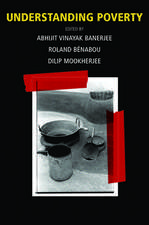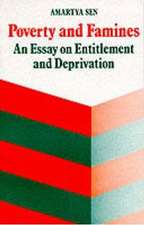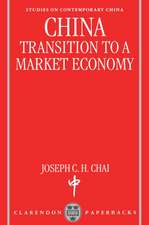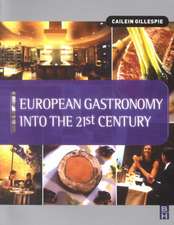The Netherlands and the Gold Standard, 1931–1936: A Study in policy formation and policy: Nederlandsch Economisch Historisch Archief, cartea 2
Editat de Richard T. Griffithsen Limba Engleză Paperback – 31 mai 1987
Preț: 384.48 lei
Nou
Puncte Express: 577
Preț estimativ în valută:
73.57€ • 77.01$ • 61.23£
73.57€ • 77.01$ • 61.23£
Carte tipărită la comandă
Livrare economică 31 martie-14 aprilie
Preluare comenzi: 021 569.72.76
Specificații
ISBN-13: 9789071617041
ISBN-10: 9071617041
Pagini: 232
Ilustrații: 230 p. 9 illus.
Dimensiuni: 155 x 235 x 12 mm
Greutate: 0.33 kg
Editura: SPRINGER NETHERLANDS
Colecția Springer
Seria Nederlandsch Economisch Historisch Archief
Locul publicării:Dordrecht, Netherlands
ISBN-10: 9071617041
Pagini: 232
Ilustrații: 230 p. 9 illus.
Dimensiuni: 155 x 235 x 12 mm
Greutate: 0.33 kg
Editura: SPRINGER NETHERLANDS
Colecția Springer
Seria Nederlandsch Economisch Historisch Archief
Locul publicării:Dordrecht, Netherlands
Public țintă
ResearchCuprins
One: Economy and Politics.- The Dutch Economy in Depression.- The Devaluation Issue Made Simple.- Pillarisation.- Pro- and Anti-Devaluationists.- Notes.- Two: The Economists’ Debate.- A Well Observed Gold Standard.- The Gold Standard after 1925.- Dutch Economists and the Gold Standard.- Notes.- Three: The Employers’ Associations.- Autarky or Free Trade.- Taboe and Criticism.- At last! Devaluation.- Conclusion.- Notes.- Four: The Agricultural Lobby.- The Issue Is Raised.- The Discussion Lingers On.- The KNBTB Takes Sides.- Conclusion.- Notes.- Five: The Trade Unions.- The Socialists (NVV).- The Catholics (RKWV).- The Protestants (CNV).- Conclusion.- Notes.- Six: The Political Parties.- The Anti-Revolutionary Party (ARP).- The Christian Historical Union (CHU).- The Free Democrats (VDB).- The Liberals (LSP).- The Catholics (RKSP).- The Social Democrats (SDAP).- Conclusion.- Notes.- Seven: The Single Issue Pressure Groups.- The Pro-devaluation coalition.- The Dutch Association for Value Stable Money (NVWG).- The Committee for Devaluation.- The Anti-Devaluation Group.- Conclusion.- Notes.- Eight: The Policy Makers.- The Impact of the Sterling Devaluation.- The Dollar Devaluation.- The Economic Council.- The Pro-Devaluation Lobby.- The Steenberghe Resignation.- The Cabinet Crisis of July 1935.- Towards the Abandonment of the Gold Standard.- The ‘Floating Guilder’: an Epilogue.- Notes.- Nine: Belgium, France and Switzerland and the End of the Gold Standard.- Belgium.- Switzerland.- France.- Conclusion.- Notes.- Index of Historical.












